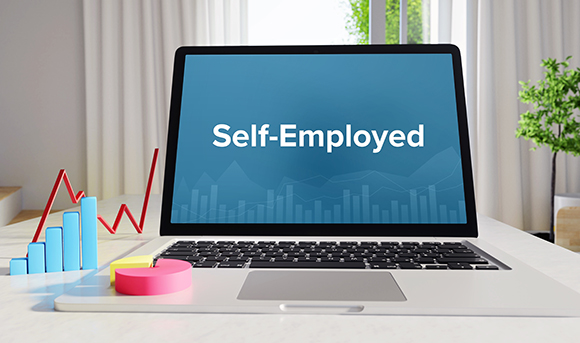Providing proof of income can be challenging for self-employed individuals, but it’s essential for major financial decisions like securing a mortgage, applying for loans, and filing taxes. This guide covers everything you need to know about demonstrating your income accurately and reliably, even without traditional pay stubs.
Why Self-Employed Individuals Need Proof of Income
Whether you’re a freelancer, contractor, or business owner, proof of income is often required for:
- Mortgage or Loan Applications: Lenders need confirmation of steady income to assess repayment ability.
- Renting Property: Landlords typically want assurance of a renter’s ability to pay consistently.
- Credit Applications: Credit card companies review income to determine creditworthiness and set limits.
- Tax Filing and Compliance: Proof of income ensures accurate tax reporting and compliance with IRS requirements.
Understanding these needs helps streamline the process and ensures you have the necessary documentation ready when it’s time to prove your income.
Key Documents to Show Proof of Income
Here’s a breakdown of reliable ways to document income as a self-employed individual:
1. Annual Tax Returns (Form 1040)
Tax returns are widely accepted proof of income for the self-employed, showing total earnings, deductions, and net income. When applying for loans or mortgages, a few years’ worth of tax returns provides a full picture of your financial health, showcasing any fluctuations in annual income.
2. 1099 Forms for Freelancers and Contractors
If you work as a freelancer or independent contractor, clients may provide 1099 forms, which are crucial for documenting income from multiple sources. These forms help track all client payments received, making them valuable for income verification and tax purposes.
3. Bank Statements
Regular deposits from clients into your bank account can serve as an unofficial pay stub. Lenders and landlords often accept bank statements to show consistent cash flow, especially if they reflect income deposits on a weekly or monthly basis. Organize these statements to clearly show income deposits for better clarity.
4. Profit and Loss Statements
A Profit and Loss (P&L) statement provides a breakdown of your revenues and expenses over a specific period, summarizing profitability. It’s particularly useful for business owners as it highlights operating income, giving an accurate picture of financial stability. To generate a P&L statement, consider using accounting software like QuickBooks or FreshBooks.
5. Self-Employed Pay Stubs
Self-employed pay stubs are especially helpful for situations where traditional pay stubs are expected. These can be generated with various accounting tools and should include details like gross earnings, deductions, and net income. Many landlords and lenders accept self-generated pay stubs, provided they reflect regular income.
Additional Methods for Proving Income
If traditional forms of proof are not sufficient, you can also use:
- Invoices and Client Contracts: Invoices show evidence of payment requests for services rendered, while contracts demonstrate ongoing work agreements. These documents reinforce your income claims and provide a record of your client relationships.
- Income Letters from Clients: Some clients may be willing to provide a letter verifying your income and the nature of your work. While informal, these letters offer a valuable record of steady earnings.
- Receipts for Cash Payments: Documenting cash payments with signed receipts or a cash receipt book can help ensure cash earnings are accounted for in your income records.
Tools to Simplify Proof of Income Documentation
Maintaining accurate records is easier with the right tools. Here are some popular options for tracking income and expenses:
- QuickBooks: Helps generate profit and loss statements, self-employed pay stubs, and detailed reports.
- FreshBooks: A good option for freelancers, FreshBooks tracks expenses, generates invoices, and provides tax summaries.
- Wave: A free tool for small businesses that handles income tracking, P&L statements, and basic accounting needs.
Investing in these tools can streamline your income documentation and ensure accuracy in your financial reporting.
How to Organize and Present Income Proof
Keeping your proof of income organized makes it easier to respond to lender, landlord, or credit inquiries. Here are some organization tips:
- Create a Digital Folder: Store all income-related documents (1099s, P&L statements, pay stubs) in a dedicated, easily accessible folder on your computer or cloud storage.
- Label Bank Statements: Clearly mark which bank statements correspond to specific months or client payments.
- Compile Invoices and Contracts: Arrange invoices and contracts by client or project to demonstrate consistent income flow.
- Create a Physical Binder: If you prefer physical copies, use a binder with labeled sections for each type of income proof.
Organizing your records makes verification quick and easy, reducing delays in any application processes.
Frequently Asked Questions (FAQs)
What counts as proof of income if I don’t have traditional pay stubs?
Documents like tax returns, bank statements, 1099 forms, and self-generated pay stubs are acceptable substitutes for traditional pay stubs.
Can I use personal bank statements as proof of income?
Yes, as long as the statements clearly show regular income deposits. Highlight these deposits for easier verification.
How do I prove income if I am a freelancer with varying income?
Show tax returns and P&L statements that average your earnings over several months or years. This demonstrates your ability to earn consistently despite fluctuations.
What red flags should I avoid when proving self-employed income?
Avoid providing incomplete records, such as missing months of bank statements or unreported income. Keeping your records thorough and transparent helps build trust.
Conclusion: Stay Prepared with Accurate Documentation
Demonstrating proof of income as a self-employed person can be straightforward with the right documents and tools. By using a combination of tax returns, bank statements, 1099 forms, and self-generated pay stubs, you can confidently present your income to meet the requirements of any financial situation. Organize your records, keep them up-to-date, and be prepared to showcase the success and stability of your self-employed business.






